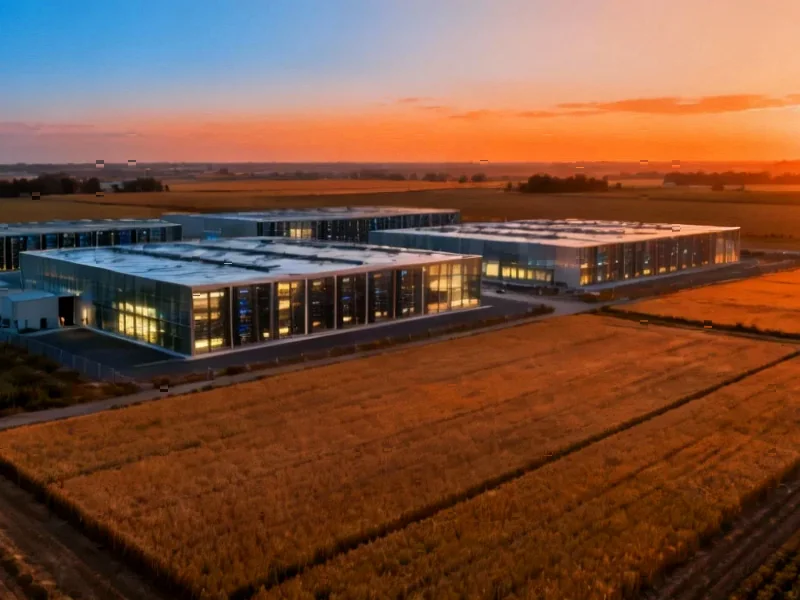According to DCD, Lincoln Property Company has reacquired a 191,000-square-foot data center at 2500 W. Frye Road in Chandler, Arizona, marking the second time the company has owned this specific facility. The 28MW data center sits on 14.5 acres and features four data center halls, with one currently leased to a Fortune 500 enterprise user. Lincoln plans to invest in converting the remaining three halls from evaporative-cooled to air-cooled systems, adding 16MW of capacity with an initial 4.2MW targeted for delivery in early Q1 2026. The company previously owned and sold this same facility in 2019 to CBRE for $72.7 million after acquiring it as part of a larger portfolio in 2018. This unusual repurchase strategy highlights Lincoln’s confidence in Arizona’s data center market dynamics.
The Unusual Strategy of Buying Back What You Sold
Lincoln’s decision to repurchase a property it previously owned and sold represents a fascinating case study in data center investment strategy. Typically, when real estate firms sell data center assets, they’re either capitalizing on market peaks or exiting markets they no longer believe in. For Lincoln to return to this specific facility suggests either a significant change in market conditions or a recognition that they sold too soon. The company’s executives frame this as part of their “ongoing value-add data center strategy,” but the reality is more complex. They’re essentially paying a premium to regain control of an asset they previously monetized, which raises questions about their initial exit timing and current valuation metrics.
Arizona’s Power Crunch Creates Rare Opportunity
The key driver behind this acquisition appears to be Arizona’s increasingly constrained power infrastructure. Lincoln specifically highlighted the facility’s “immediately available utility power” through the existing Salt River Project substation as a critical advantage. In today’s data center market, available power capacity has become more valuable than the physical buildings themselves. Major markets like Phoenix are experiencing unprecedented demand from hyperscale, enterprise, and AI workloads, creating situations where power availability determines development timelines more than construction schedules. The fact that this facility comes with dedicated power infrastructure that doesn’t require years of utility coordination makes it exceptionally valuable in the current environment.
The Risky Mechanical System Transition
Lincoln’s plan to transition from evaporative-cooled to air-cooled mechanical systems represents a significant technical gamble. While air-cooled systems generally offer better water efficiency—a critical consideration in Arizona’s drought-prone environment—they typically consume more energy. This creates a complex trade-off between water conservation and power efficiency that could impact the facility’s operating costs and sustainability credentials. The conversion process itself is technically challenging and risks disrupting existing operations. Given that one hall remains occupied by a Fortune 500 tenant, Lincoln must execute this transition without service interruptions, adding complexity to an already ambitious retrofit schedule targeting early 2026 delivery.
Questionable Market Timing Amid Capacity Wave
The timing of Lincoln’s investment raises legitimate concerns about potential market saturation. While Arizona currently faces record-low vacancy rates, the state is experiencing a massive wave of new data center development. Major players are announcing multi-billion dollar investments in the region, with thousands of megawatts in the pipeline. By the time Lincoln delivers its additional capacity in 2026, the market could look very different. The company is betting that demand will continue outpacing supply, but with interest rates remaining elevated and economic uncertainty persisting, this represents a substantial market timing risk that could challenge their investment thesis.
Tenant Concentration and Bankruptcy History
The facility’s tenant history reveals potential stability concerns. The previous major tenant, INAP, leased the site from Lincoln in 2018 but filed for bankruptcy in 2023 and has since rebranded as HorizonIQ. This bankruptcy and tenant transition highlight the volatility in the colocation market, particularly among second-tier providers. While the current Fortune 500 tenant likely represents more stable occupancy, the facility’s history demonstrates the risks of tenant concentration. Lincoln’s success will depend on securing reliable, credit-worthy tenants for the additional capacity they’re developing, which becomes increasingly challenging as more supply enters the market.
Evolving Competitive Dynamics in Phoenix
Lincoln’s re-entry into this specific property comes as the Phoenix data center market undergoes fundamental transformation. The market is shifting from being dominated by enterprise and colocation providers to becoming a strategic hub for hyperscale cloud providers and AI workloads. This changes the competitive dynamics significantly—large cloud providers typically develop their own facilities or work with specialized wholesale providers rather than traditional real estate firms. Lincoln’s value proposition of “turnkey capacity” must now compete against purpose-built facilities designed specifically for hyperscale requirements, creating pressure on both pricing and technical specifications that may challenge their business model.




